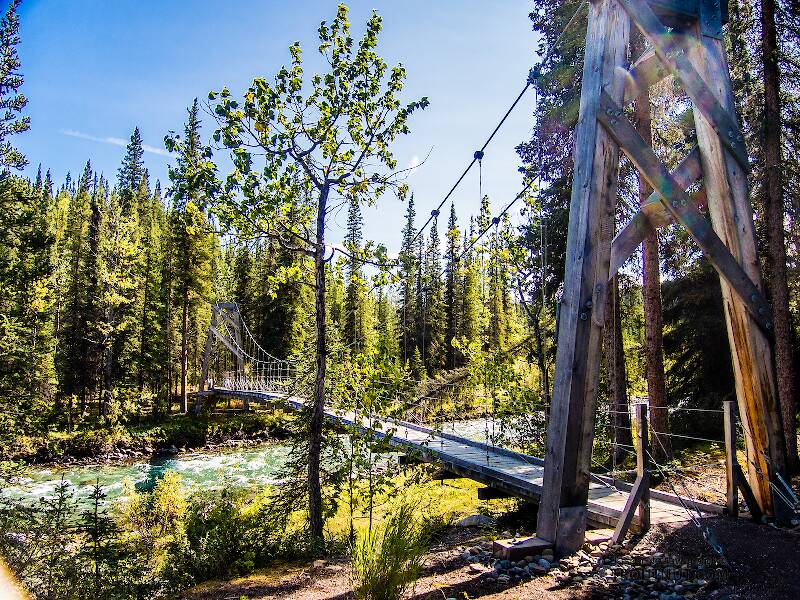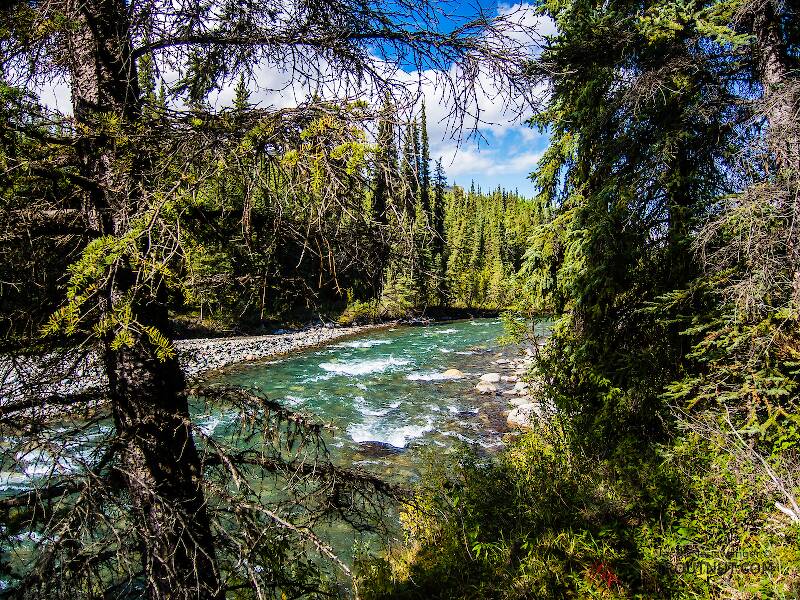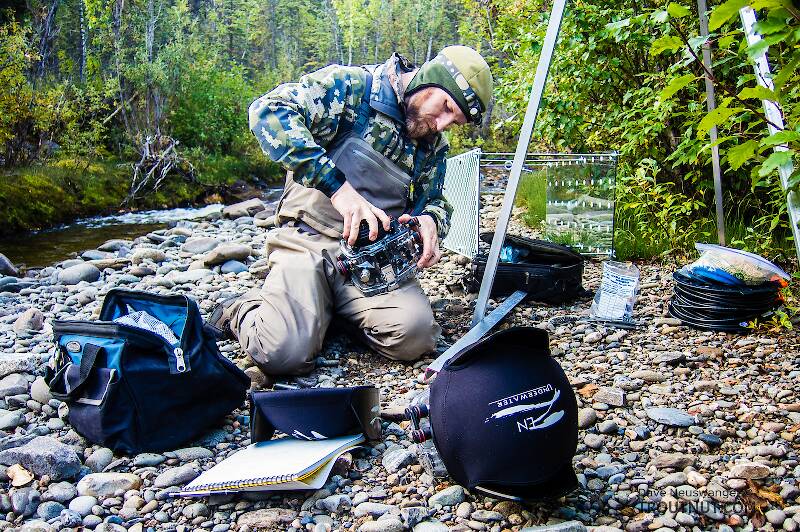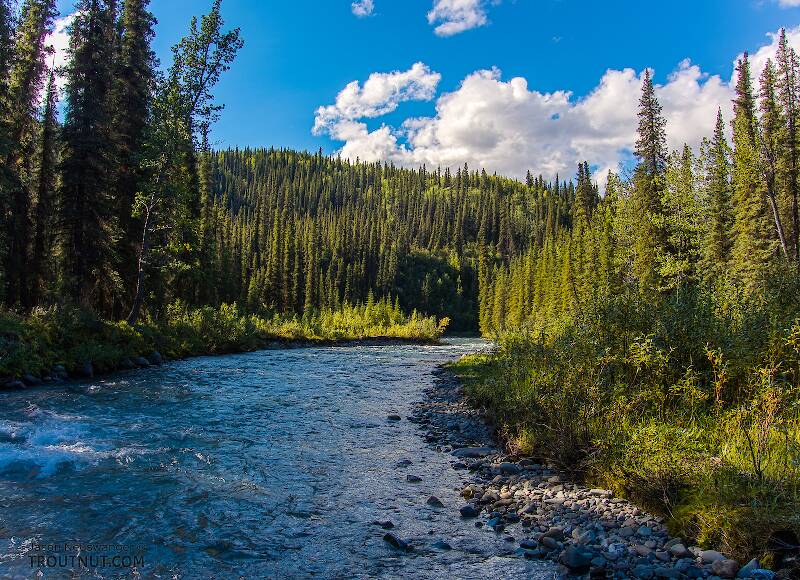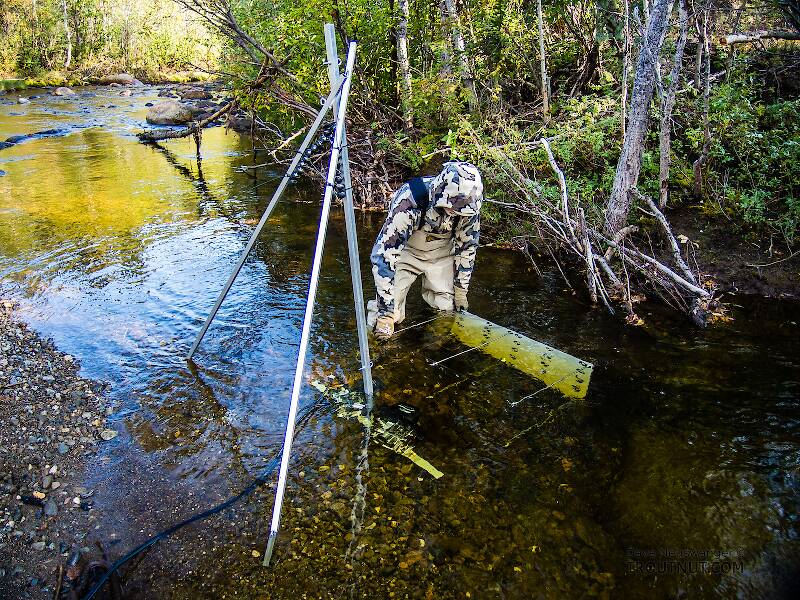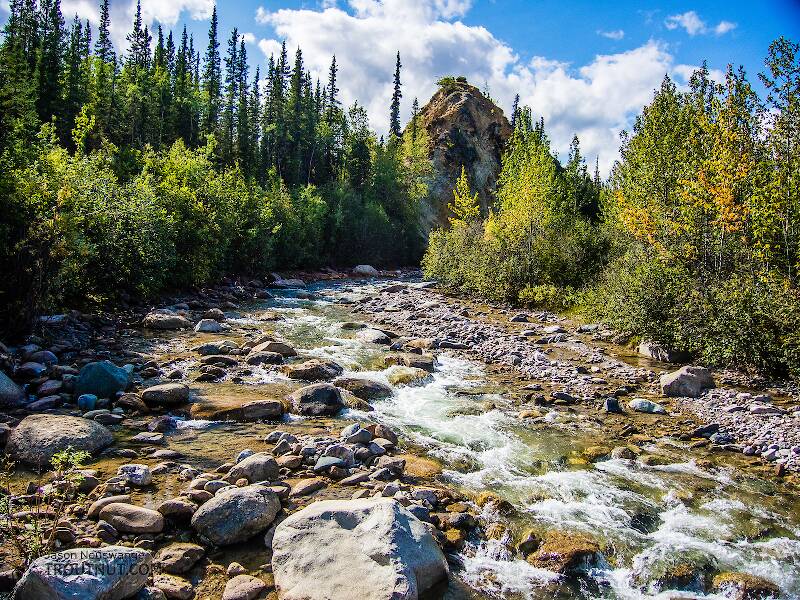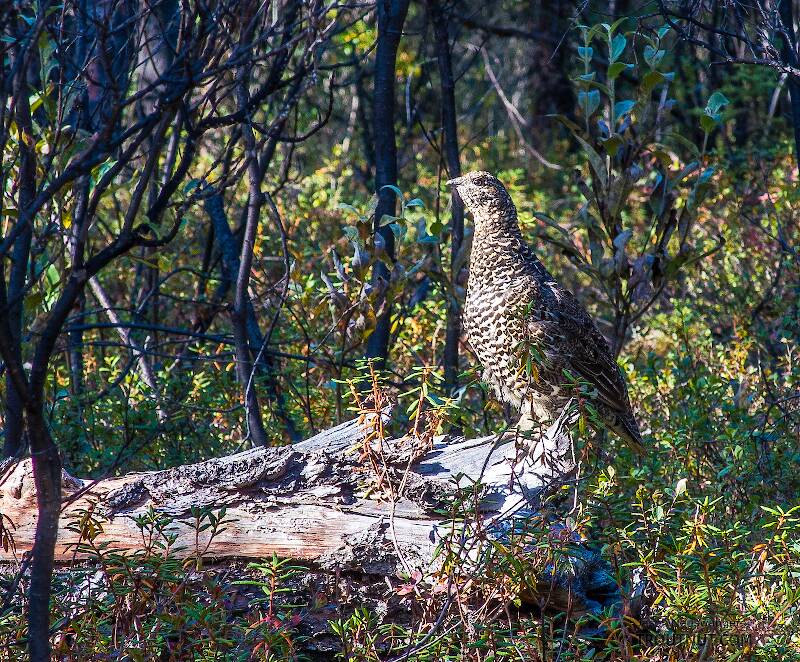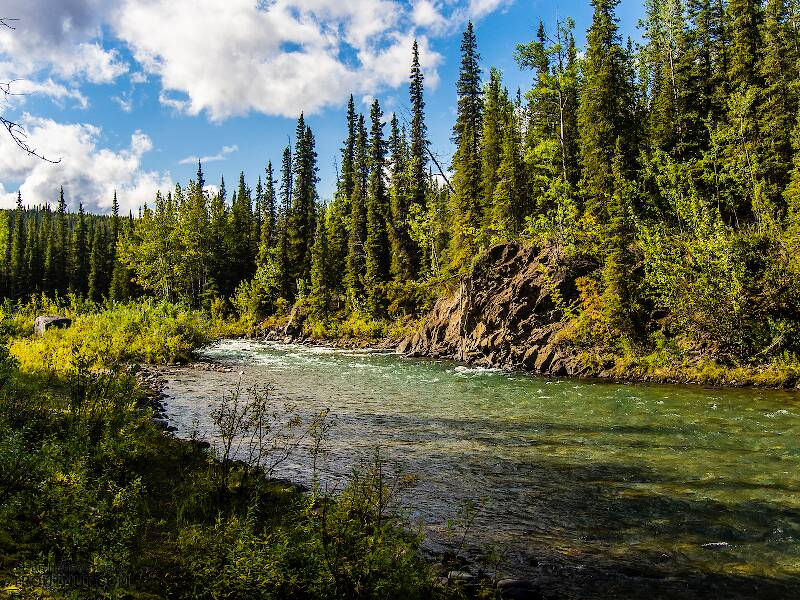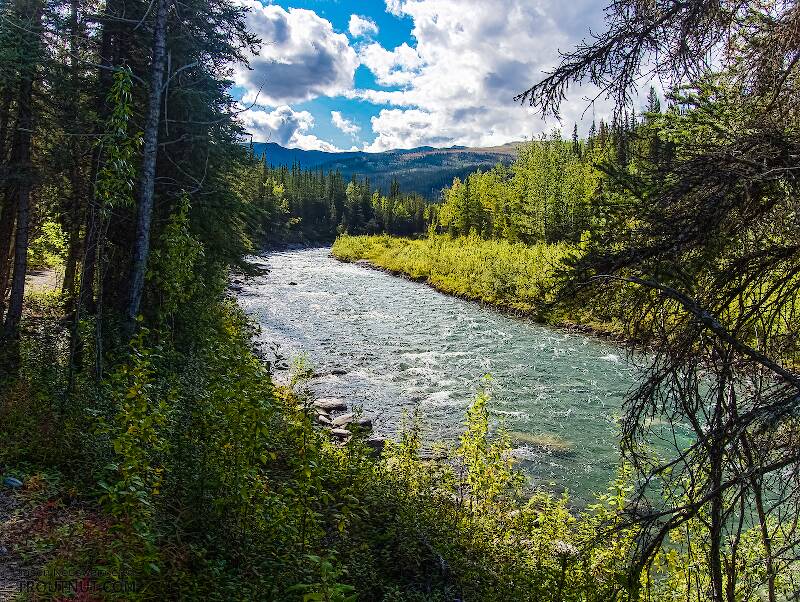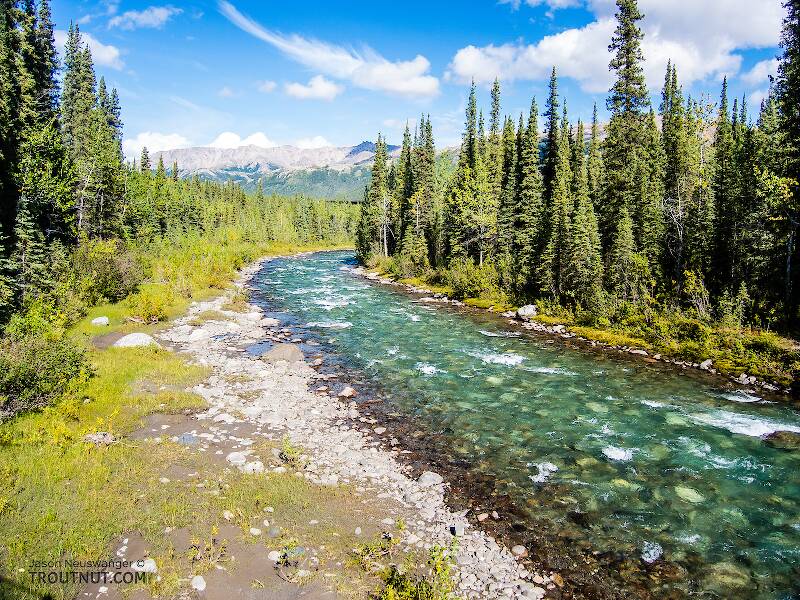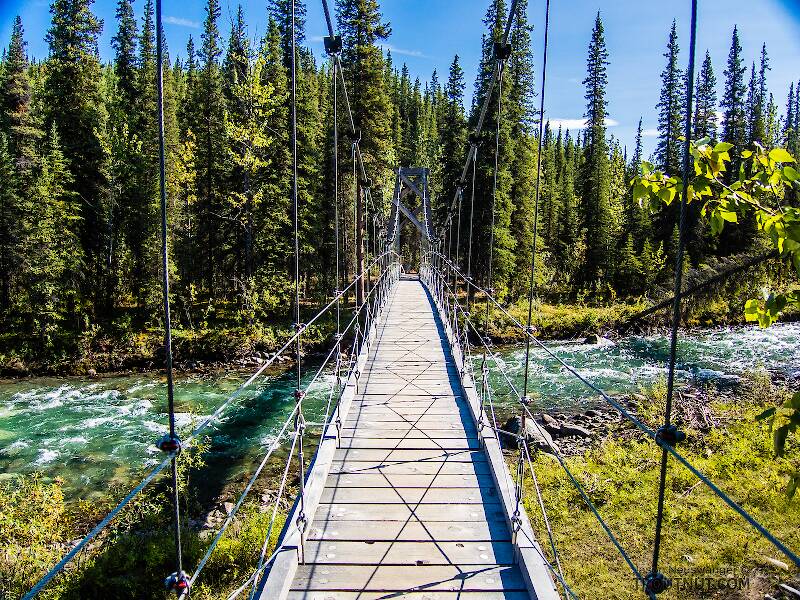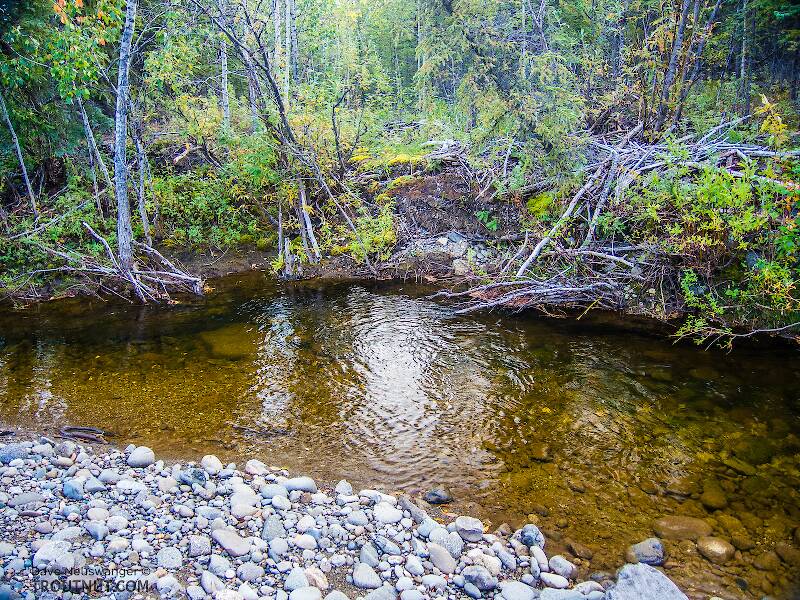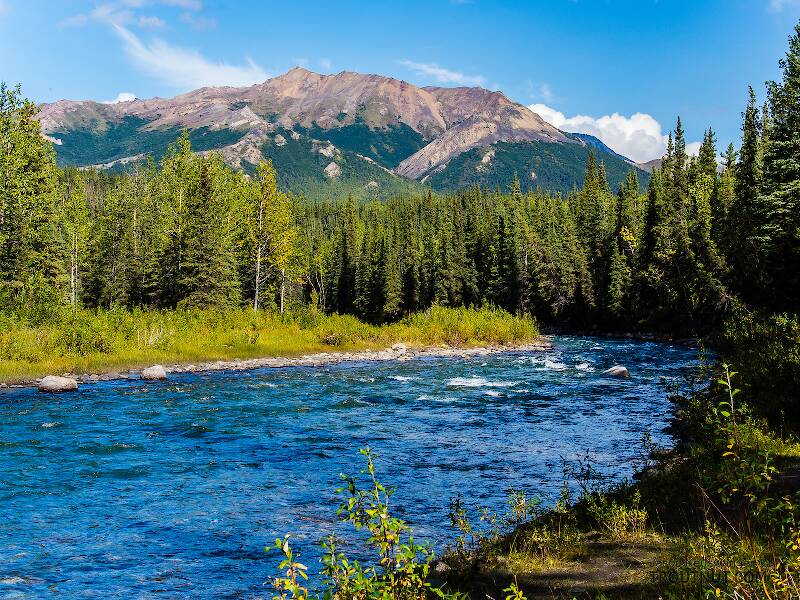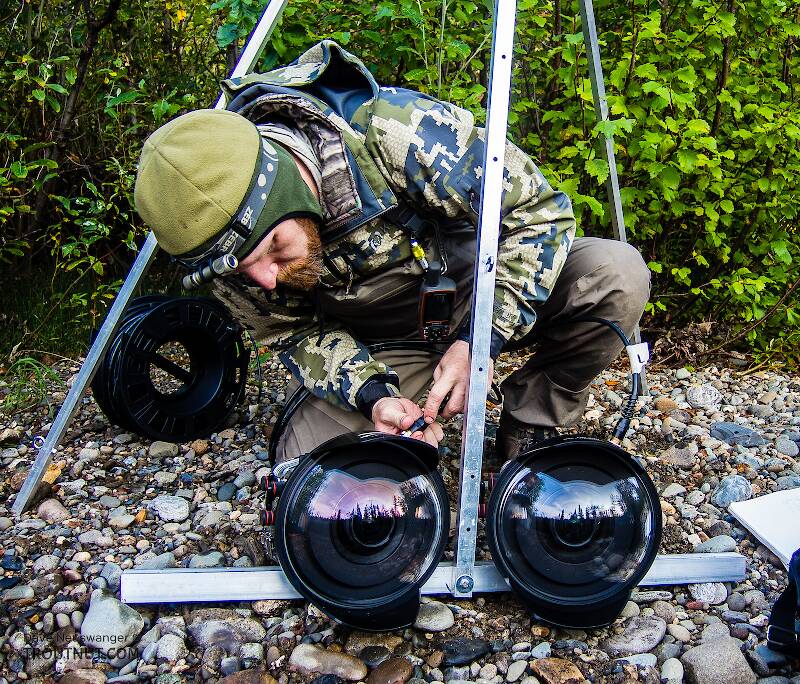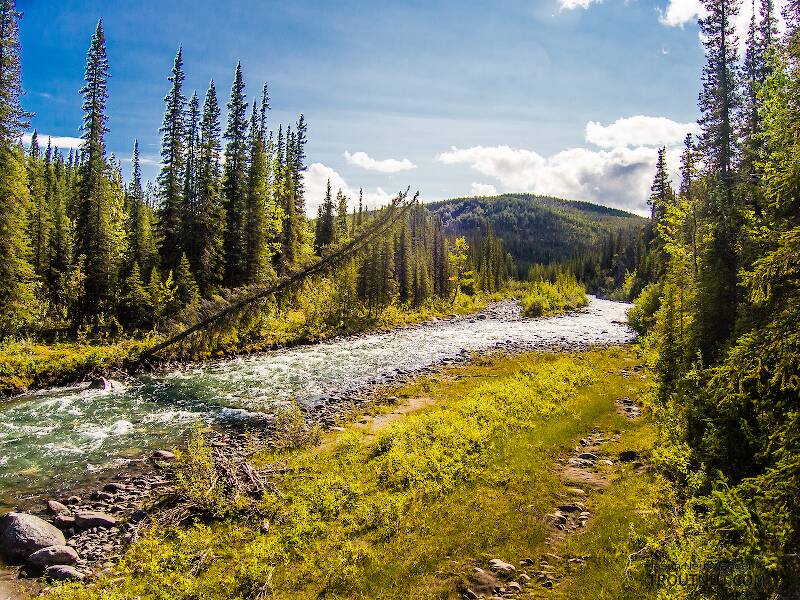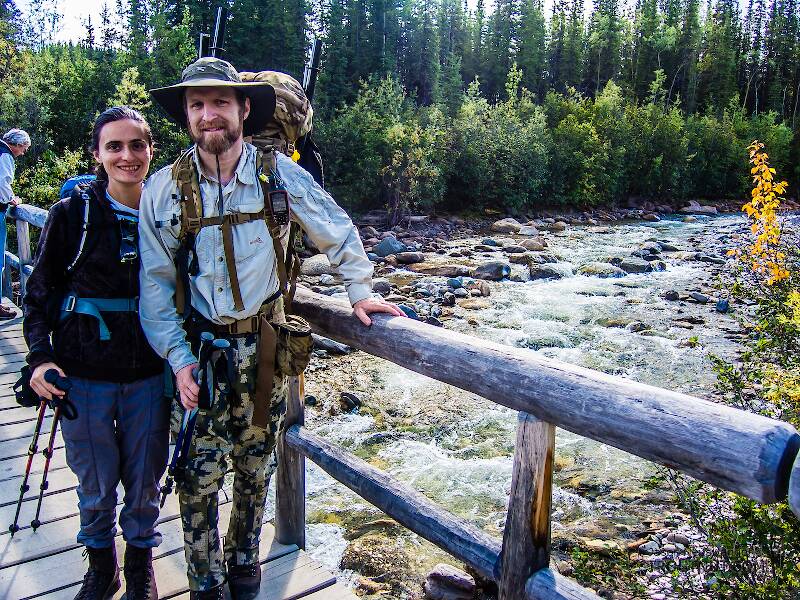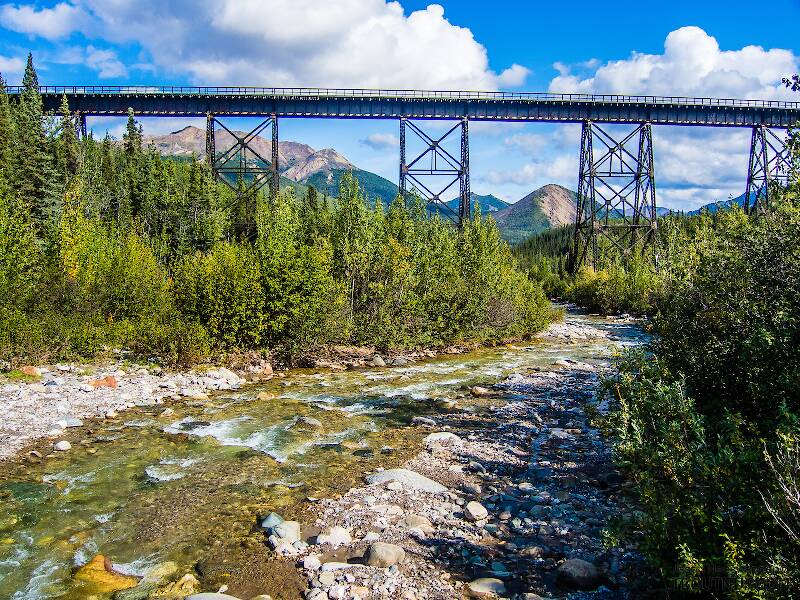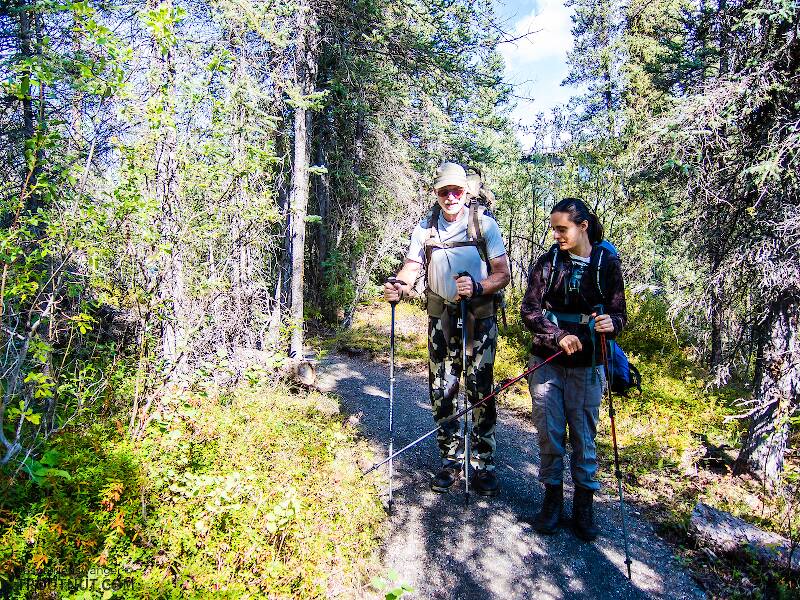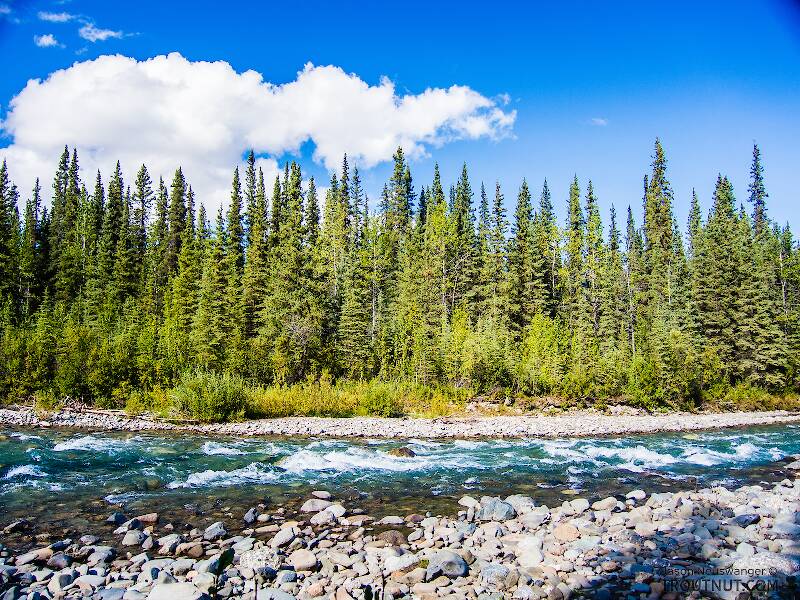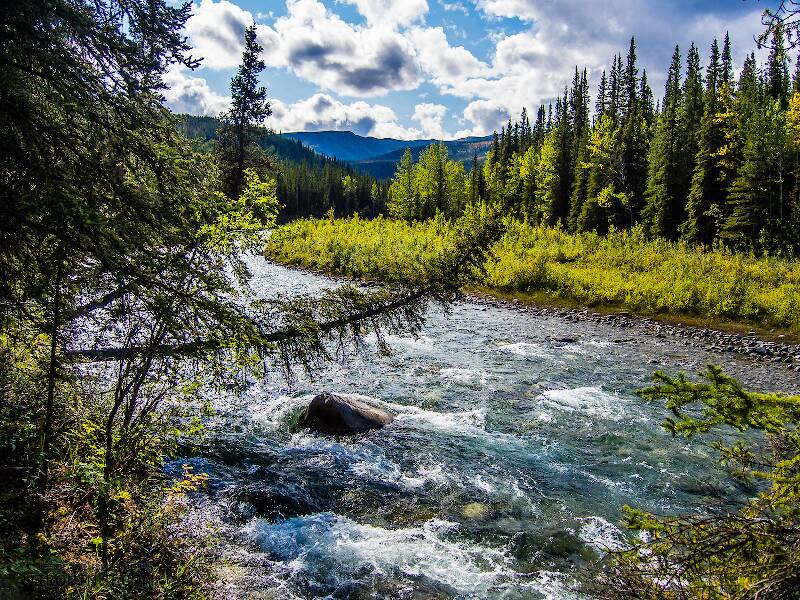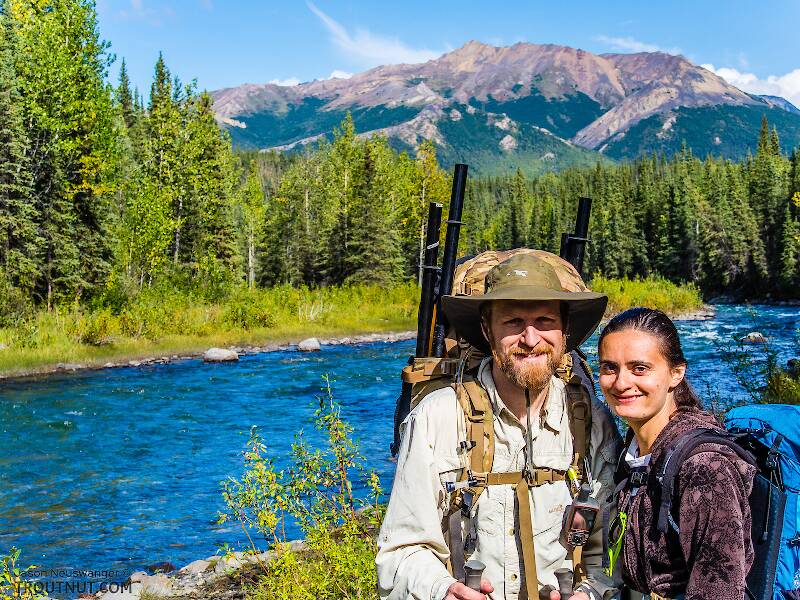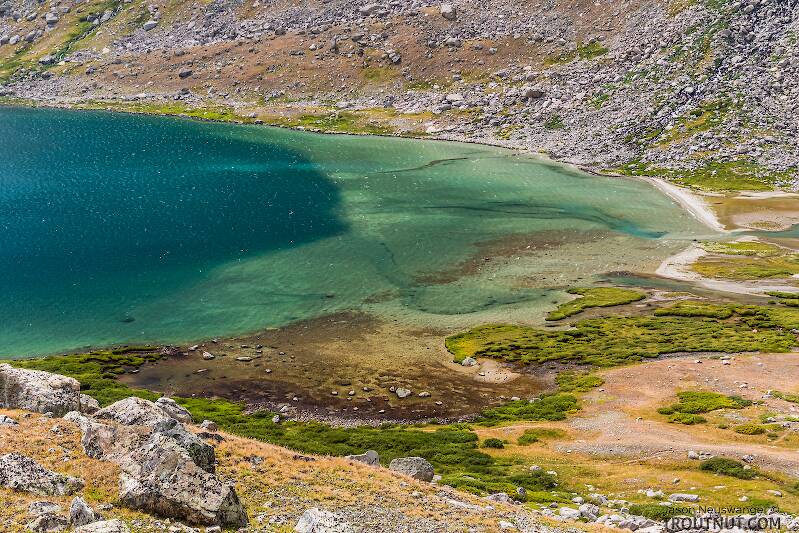
Salmonflies
Pteronarcys californica
The giant Salmonflies of the Western mountains are legendary for their proclivity to elicit consistent dry-fly action and ferocious strikes.
Featured on the forum

It's only barely visible in one of my pictures, but I confirmed under the microscope that this one has a prosternal horn and the antennae are mid-way between the eyes and front of the head capsule.
I'm calling this one Pycnopsyche, but it's a bit perplexing. It seems to key definitively to at least Couplet 8 of the Key to Genera of Limnephilidae Larvae. That narrows it down to three genera, and the case seems wrong for the other two. The case looks right for Pycnopsyche, and it fits one of the key characteristics: "Abdominal sternum II without chloride epithelium and abdominal segment IX with only single seta on each side of dorsal sclerite." However, the characteristic "metanotal sa1 sclerites not fused, although often contiguous" does not seem to fit well. Those sclerites sure look fused to me, although I can make out a thin groove in the touching halves in the anterior half under the microscope. Perhaps this is a regional variation.
The only species of Pycnopsyche documented in Washington state is Pycnopsyche guttifera, and the colors and markings around the head of this specimen seem to match very well a specimen of that species from Massachusetts on Bugguide. So I am placing it in that species for now.
Whatever species this is, I photographed another specimen of seemingly the same species from the same spot a couple months later.
I'm calling this one Pycnopsyche, but it's a bit perplexing. It seems to key definitively to at least Couplet 8 of the Key to Genera of Limnephilidae Larvae. That narrows it down to three genera, and the case seems wrong for the other two. The case looks right for Pycnopsyche, and it fits one of the key characteristics: "Abdominal sternum II without chloride epithelium and abdominal segment IX with only single seta on each side of dorsal sclerite." However, the characteristic "metanotal sa1 sclerites not fused, although often contiguous" does not seem to fit well. Those sclerites sure look fused to me, although I can make out a thin groove in the touching halves in the anterior half under the microscope. Perhaps this is a regional variation.
The only species of Pycnopsyche documented in Washington state is Pycnopsyche guttifera, and the colors and markings around the head of this specimen seem to match very well a specimen of that species from Massachusetts on Bugguide. So I am placing it in that species for now.
Whatever species this is, I photographed another specimen of seemingly the same species from the same spot a couple months later.

Troutnut is a project started in 2003 by salmonid ecologist Jason "Troutnut" Neuswanger to help anglers and
fly tyers unabashedly embrace the entomological side of the sport. Learn more about Troutnut or
support the project for an enhanced experience here.
By Dneuswanger on August 20th, 2014
Our ambitious plan for the day was to test Jason’s camera equipment in Mystery Creek #170, break camp and pack everything out (two one-mile round trips), then join Jason’s wife, Lena, at Denali National Park for an afternoon hike several miles up Riley Creek before rafting back down in unfamiliar whitewater and returning over 100 miles by vehicle to Fairbanks. One must try to ignore one’s actual age (59 in my case) when planning such a day. After morning coffee and granola, I prepared to break camp whenever we finish working on the creek. By mid-morning we had assembled all our gear and hauled it to a gravel bar a couple hundred yards downstream to a small pool where Jason was fairly certain there would be Dolly Varden and Arctic grayling to film. The next couple hours were spent calibrating and testing equipment.

We encountered several logistical and technical problems that Jason would have to address before he could reliably use the large cameras to shoot underwater video. We had hoped to film some Dolly Varden, but had to settle for discovering problems that needed solving before real data could be obtained. This is an inevitable, productive step in the first weeks of any complex new scientific research project.
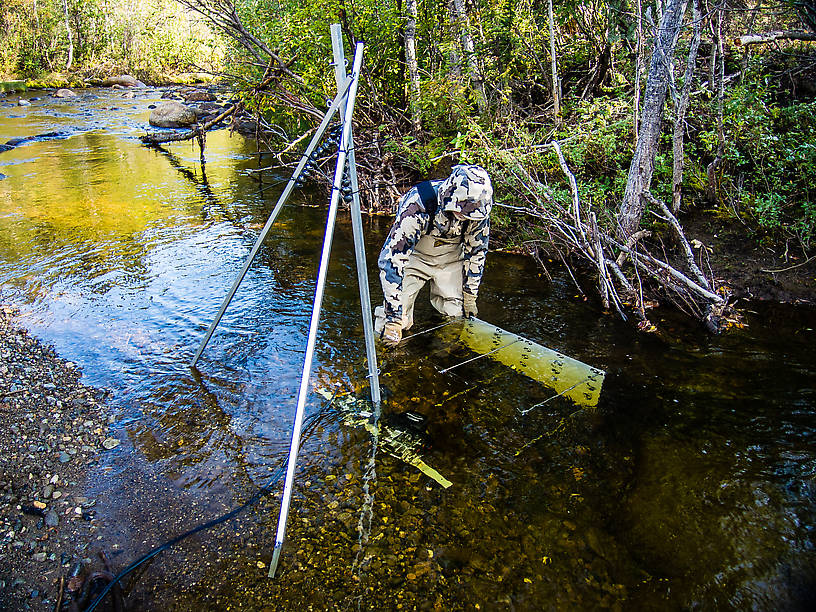
By late morning we were packing up camp and hauling all our gear back to the car. The good trail we cleared yesterday expedited our half-mile treks, but we still had to make two trips each to transport our 300+ pounds of equipment, so we did not get on the road to Denali until well after lunchtime. We met Lena at the Park Visitor Center parking lot where she had been dropped off by shuttle bus from Fairbanks. Jason and I changed clothes and gear from camping/working mode to hiking/rafting mode in the Visitor Center parking lot, much to the amusement of several fashionably dressed tourists from all over the world. By mid-afternoon we were heading up Riley Creek carrying only water, snacks, and inflatable pack rafting gear.
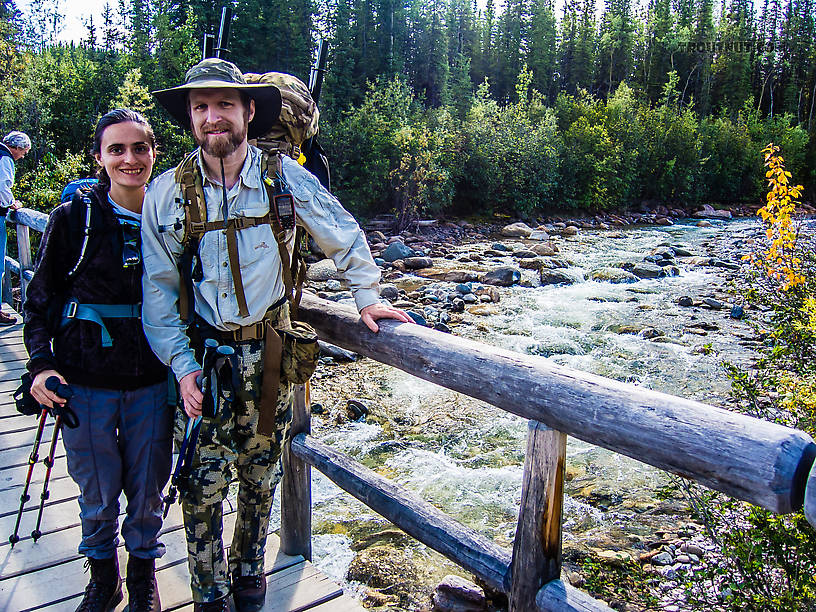
We hiked several miles upstream beyond the usual day-trip tourist area until we reached a very large, steep hill that would take at least an hour or two to circumnavigate to the planned put-in with our packrafts. Judging that we lacked the time to make the full float down, we backtracked down the hill and found a suitable spot to enter the river on a large island of gravel. Denali National Park was quite the setting for a happy couple to celebrate their 4th Wedding Anniversary. Congratulations Jason and Lena!

Near the river’s edge, we encountered three spruce grouse. Typical of their species, they were unconcerned about their safety or the closeness of our cameras.

We made our way to the gravel island, inflated the packrafts, and headed downstream at about 5:30 p.m. Pleasant runs were interspersed with challenging rapids replete with inconveniently placed boulders that required my constant attention to avoid swamping. It was an exhilarating hour of “in-the-moment” paddling that we managed to experience without serious mishap, despite several close calls.
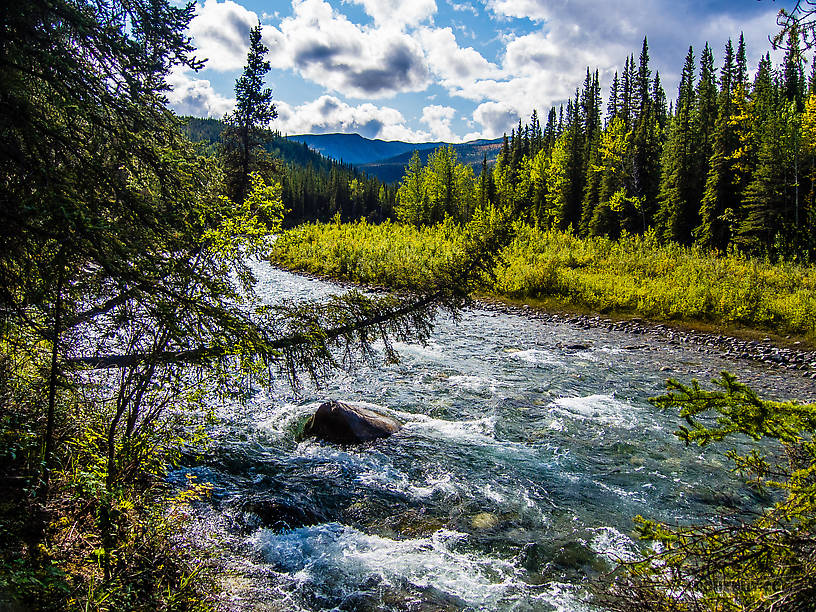
By the time we reached our take-out point on a gravel bar a couple hundred yards from the entrance road to the Park Visitor’s Center, we were soaked due to the constant splashing of large standing waves in the more turbulent rapids. Lena was getting chilly, so I agreed to stay with the equipment and deflate the rafts while Jason and Lena hitched a ride to the Visitor Center to retrieve our car. I managed to get everything hauled up to the road by the time they got back in dry clothes and a warm vehicle. We stuffed everything into the back of the RAV4 and headed back to Fairbanks as the sun was setting. What a long and exciting day!

We encountered several logistical and technical problems that Jason would have to address before he could reliably use the large cameras to shoot underwater video. We had hoped to film some Dolly Varden, but had to settle for discovering problems that needed solving before real data could be obtained. This is an inevitable, productive step in the first weeks of any complex new scientific research project.

By late morning we were packing up camp and hauling all our gear back to the car. The good trail we cleared yesterday expedited our half-mile treks, but we still had to make two trips each to transport our 300+ pounds of equipment, so we did not get on the road to Denali until well after lunchtime. We met Lena at the Park Visitor Center parking lot where she had been dropped off by shuttle bus from Fairbanks. Jason and I changed clothes and gear from camping/working mode to hiking/rafting mode in the Visitor Center parking lot, much to the amusement of several fashionably dressed tourists from all over the world. By mid-afternoon we were heading up Riley Creek carrying only water, snacks, and inflatable pack rafting gear.

We hiked several miles upstream beyond the usual day-trip tourist area until we reached a very large, steep hill that would take at least an hour or two to circumnavigate to the planned put-in with our packrafts. Judging that we lacked the time to make the full float down, we backtracked down the hill and found a suitable spot to enter the river on a large island of gravel. Denali National Park was quite the setting for a happy couple to celebrate their 4th Wedding Anniversary. Congratulations Jason and Lena!

Near the river’s edge, we encountered three spruce grouse. Typical of their species, they were unconcerned about their safety or the closeness of our cameras.

We made our way to the gravel island, inflated the packrafts, and headed downstream at about 5:30 p.m. Pleasant runs were interspersed with challenging rapids replete with inconveniently placed boulders that required my constant attention to avoid swamping. It was an exhilarating hour of “in-the-moment” paddling that we managed to experience without serious mishap, despite several close calls.

By the time we reached our take-out point on a gravel bar a couple hundred yards from the entrance road to the Park Visitor’s Center, we were soaked due to the constant splashing of large standing waves in the more turbulent rapids. Lena was getting chilly, so I agreed to stay with the equipment and deflate the rafts while Jason and Lena hitched a ride to the Visitor Center to retrieve our car. I managed to get everything hauled up to the road by the time they got back in dry clothes and a warm vehicle. We stuffed everything into the back of the RAV4 and headed back to Fairbanks as the sun was setting. What a long and exciting day!
Photos by Troutnut and Dneuswanger from Riley Creek and Mystery Creek #170 in Alaska
